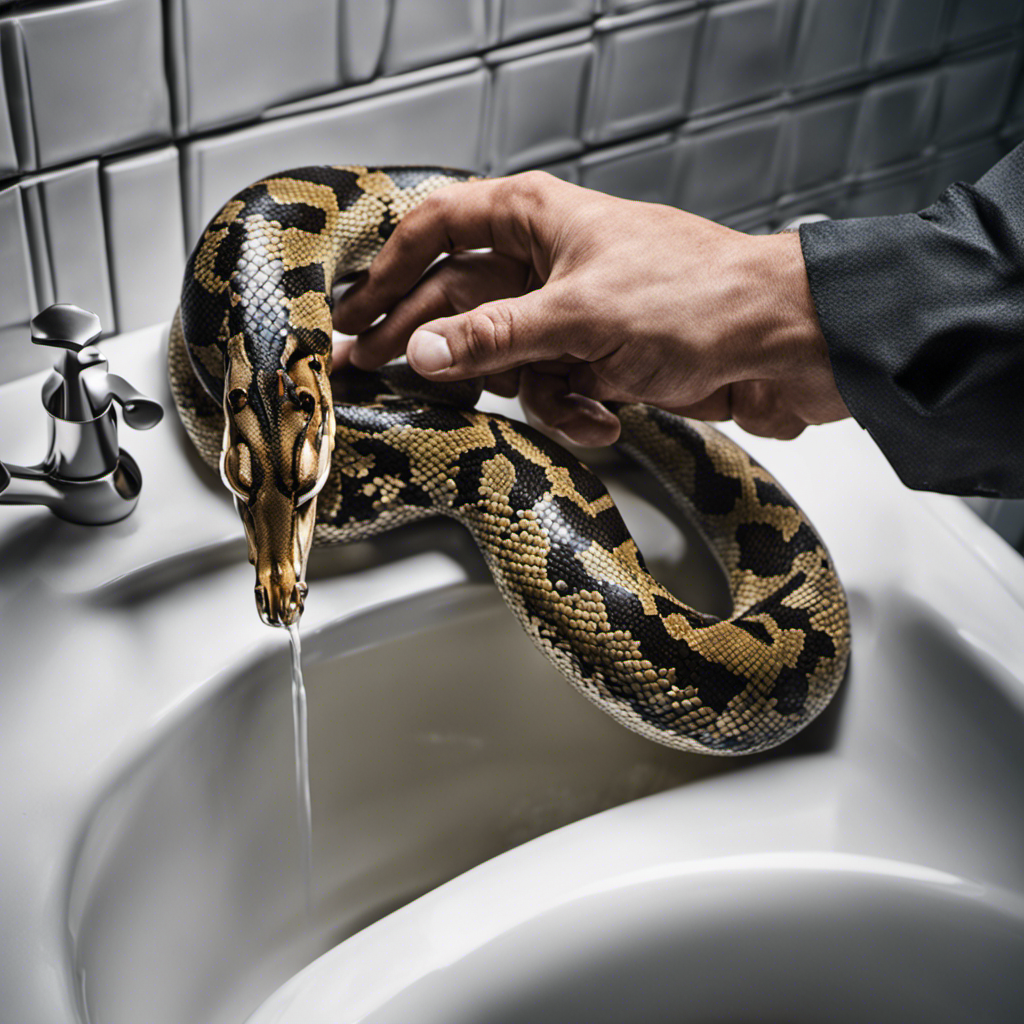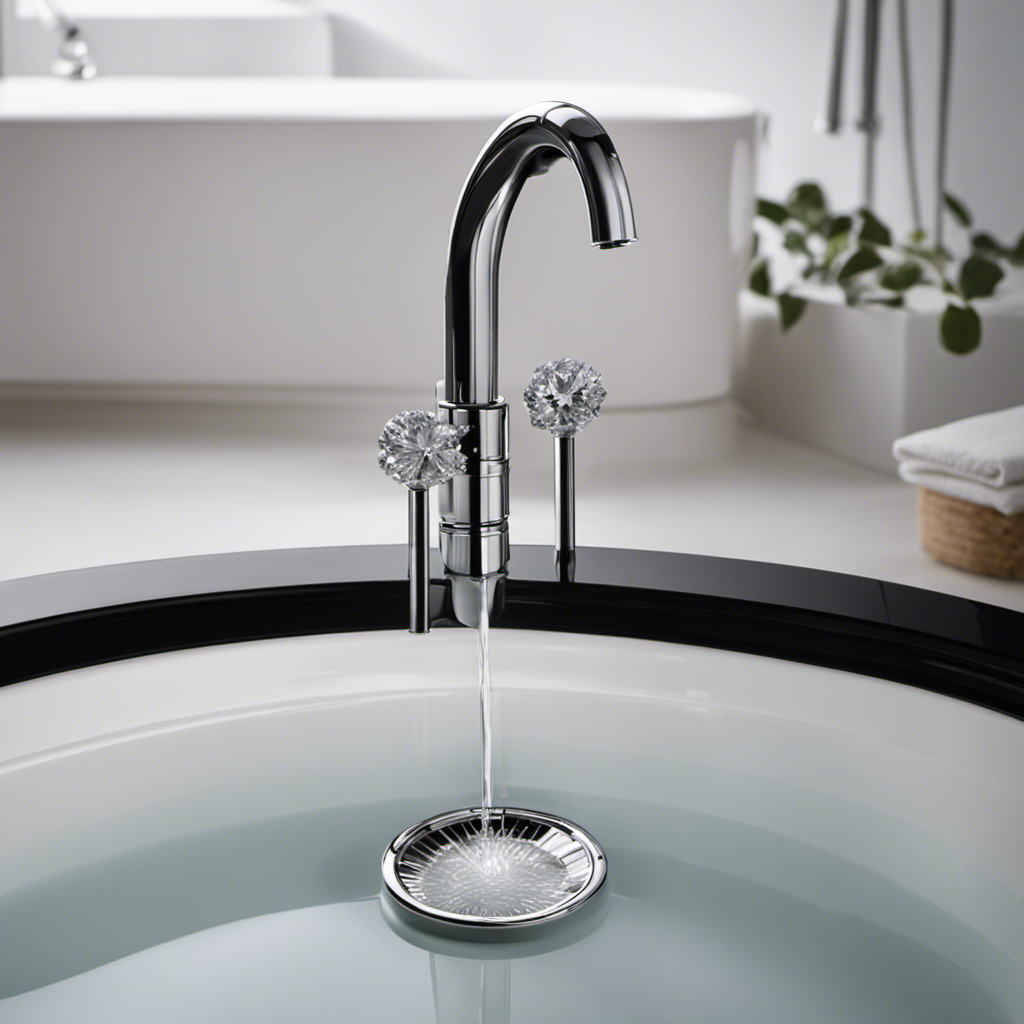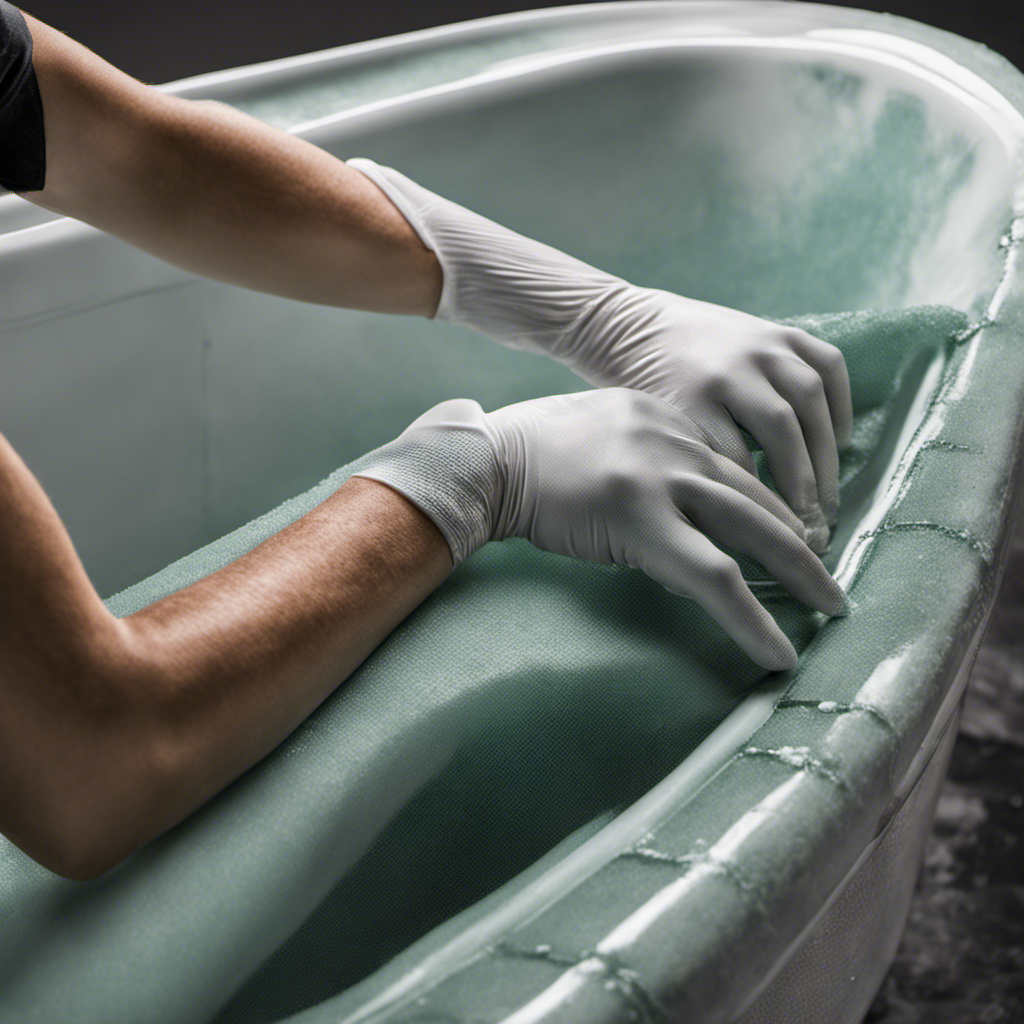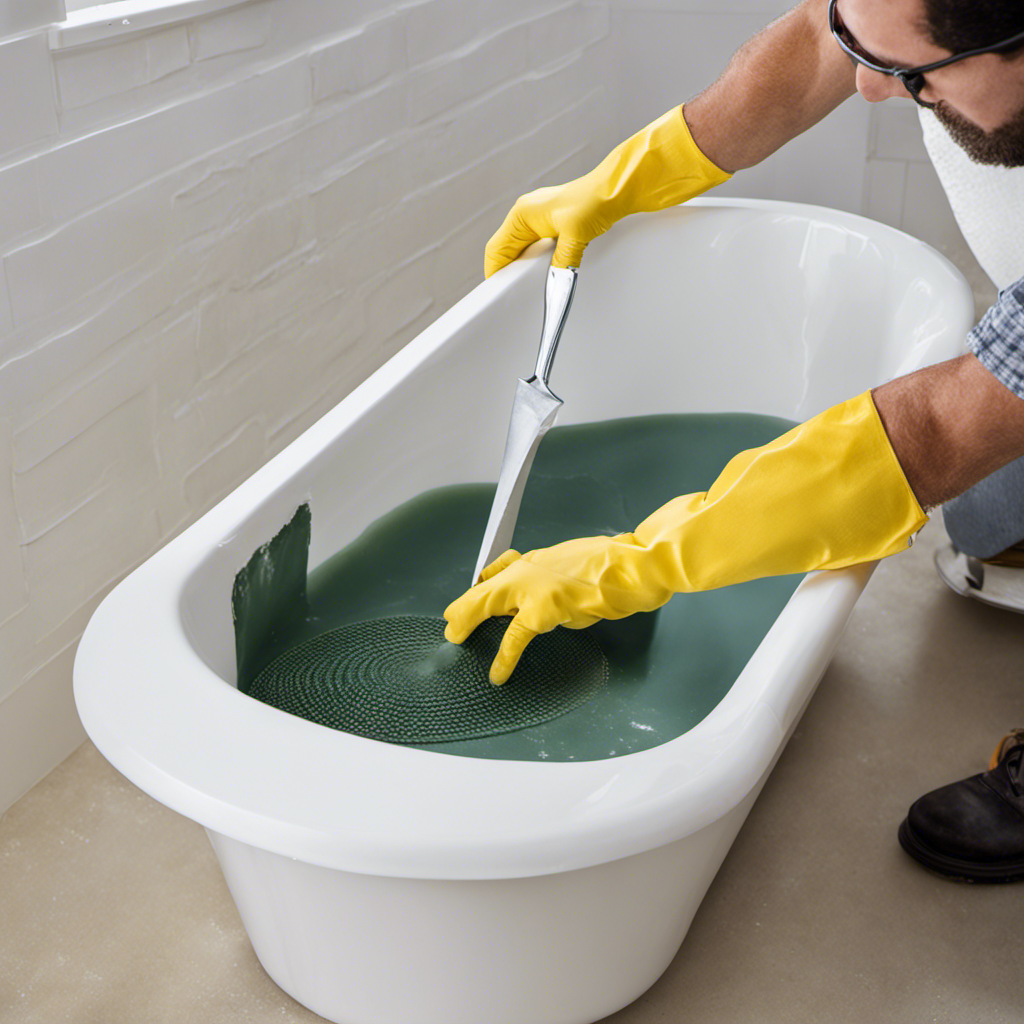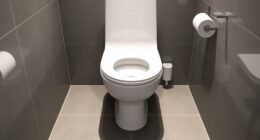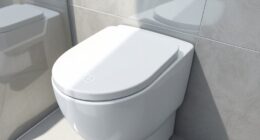Is your bathtub drain clogged to the point of overflowing and causing you endless frustration? Fear not, because we have the ultimate solution for you.
In this article, we will guide you step-by-step on how to snake your bathtub drain without any risk of overflow.
With just a few simple tools and our expert advice, you’ll be able to tackle this problem head-on and regain the smooth water flow you’ve been longing for.
Say goodbye to clogs and hello to a stress-free bathing experience!
Key Takeaways
- Regular maintenance, such as snaking the drain, helps prevent bathtub clogs.
- Different types of bathtub drain stoppers have their own advantages and disadvantages.
- The snaking process involves inserting the snake into the drain, rotating it to break up the clog, and slowly retracting it.
- Troubleshooting common issues includes addressing hair buildup, soap scum, foreign objects, grease, and oil.
Tools and Materials Needed
To snake your bathtub drain without overflow, you’ll need a pair of gloves, a snake or drain auger, and a bucket to catch any excess water.
There are several alternative drain cleaning methods available, but using a snake is the most effective and efficient way to clear a clogged drain.
When choosing the right drain snake, consider the length and diameter of the snake. For bathtub drains, a snake with a length of at least 25 feet and a diameter of 1/4 inch is recommended. This will ensure that the snake can reach deep into the drain and effectively remove any clogs.
Once you have gathered the necessary tools and materials, you can proceed to preparing the bathtub drain for snaking.
Preparing the Bathtub Drain
Make sure you have everything ready for the task of clearing your bathtub drain without causing an overflow. Regular maintenance of your bathtub drain is important to prevent clogs and keep the water flowing smoothly.
Before you start, it’s essential to understand the different types of bathtub drain stoppers and their pros and cons. The most common types are the lift-and-turn, the push-and-pull, and the toe-touch stoppers.
The lift-and-turn stopper requires you to lift and twist it to open or close the drain, offering a secure seal but potentially prone to collecting hair.
The push-and-pull stopper is easy to use but may not create a tight seal.
The toe-touch stopper is convenient because you can open and close it by simply pressing it with your foot, but it can be less durable.
Knowing the type of stopper you have will help you prepare and approach the task of clearing your bathtub drain effectively.
Step-by-Step Snaking Process
First, you’ll need to gather the necessary tools for effectively clearing the clog in your bathtub drain.
To begin the snaking process, insert the snake into the drain until you feel resistance. Rotate the snake clockwise while applying gentle pressure to break up the clog. Be cautious not to use excessive force as it may damage the pipes.
Continue snaking until you no longer feel resistance. Once the clog is cleared, slowly retract the snake, ensuring it doesn’t get stuck or cause any damage. Proper technique is essential to avoid further complications. Remember to wear gloves and eye protection for safety precautions.
Now that you’ve successfully cleared the clog, let’s move on to troubleshooting common issues that may arise during the process.
Troubleshooting Common Issues
If you experience any difficulties while snaking your bathtub drain, there are a few common issues that you may encounter. These issues can be frustrating and may require professional drain cleaning services to resolve. Here are some potential causes of bathtub drain clogs that you should be aware of:
- Hair buildup: Over time, hair can accumulate in your drain and cause blockages.
- Soap scum: Soap residue can build up in your drain and contribute to clogs.
- Foreign objects: Items like jewelry or small toys can accidentally fall into the drain and obstruct the flow of water.
- Grease and oil: When grease or oil is poured down the drain, it can solidify and create stubborn clogs.
Understanding these causes can help you troubleshoot and address any difficulties you encounter while snaking your bathtub drain. Now let’s move on to some tips for preventing future clogs.
Tips for Preventing Future Clogs
To keep your drains clear and prevent future clogs, it’s important to regularly clean them using natural solutions. Maintenance techniques and preventive measures can help you avoid costly and inconvenient plumbing issues.
One effective method is to mix equal parts of baking soda and vinegar and pour it down the drain. Let it sit for about 30 minutes before flushing it with hot water. This combination helps to break down grease and grime that can accumulate in your pipes.
Another preventive measure is to use a drain strainer to catch hair and other debris before it goes down the drain. Additionally, you should avoid pouring grease, oil, and coffee grounds down the drain, as they can solidify and cause blockages.
Frequently Asked Questions
How Much Time Does It Usually Take to Snake a Bathtub Drain Without Overflow?
To snake a bathtub drain without overflow, it usually takes about 15-30 minutes. However, the time may vary depending on the severity of the clog. Proper maintenance and troubleshooting can help prevent the need for snaking.
Can I Use a Plunger Instead of a Drain Snake to Clear a Bathtub Drain?
Yes, you can use a plunger as an alternative to a drain snake to clear a bathtub drain. However, the effectiveness of a plunger depends on the severity of the clog.
Is It Possible to Snake a Bathtub Drain Without Removing the Overflow Cover?
Yes, it is possible to snake a bathtub drain without removing the overflow cover, but it’s not recommended. Using alternative methods may lead to incomplete cleaning, potential damage, and future clogs.
What Should I Do if the Snake Gets Stuck in the Drain?
If the snake gets stuck in the drain, don’t panic. First, turn off the snake and try pulling it out gently. If that doesn’t work, you may need to remove the drain cover and retrieve the snake from there.
How Often Should I Snake My Bathtub Drain to Prevent Future Clogs?
To prevent future clogs, snake your bathtub drain every 3-6 months. Additionally, consider these tips: use a drain guard, avoid pouring grease down the drain, and regularly flush with hot water.
Conclusion
In conclusion, snaking a bathtub drain without an overflow is a straightforward process that can be done with a few simple tools and materials. By following the step-by-step instructions and troubleshooting common issues, you can effectively remove any clogs and restore proper drainage.
Remember to take preventative measures to avoid future clogs, such as using drain covers and regularly cleaning the drain. Just like a snake slithering through a tight space, with a little effort and know-how, you can keep your bathtub drain flowing smoothly.
